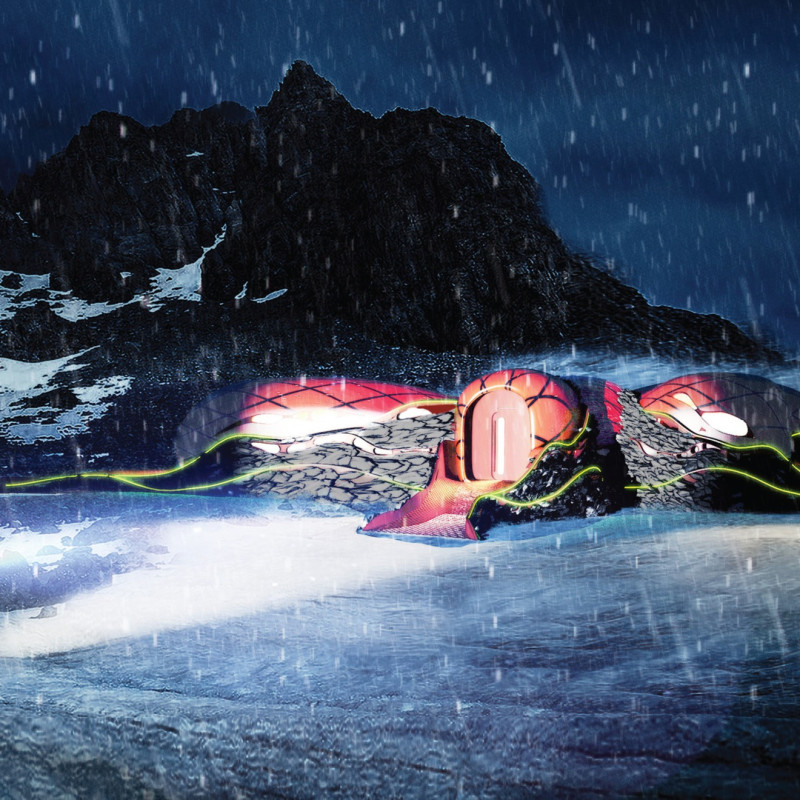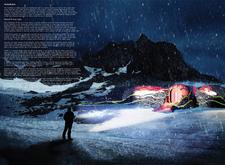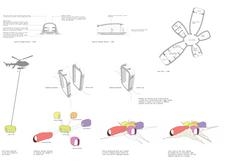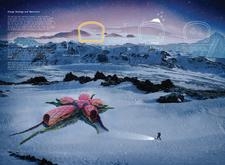5 key facts about this project
## Overview
Located in Iceland, the HudulKabin project is designed to provide a functional and sustainable refuge for hikers, integrating seamlessly with the surrounding landscape. It draws inspiration from local cultural narratives while prioritizing environmental considerations. The cabin serves as a practical shelter equipped with essential amenities, designed to respect and enhance the natural terrain.
## Architectural Form and Spatial Organization
The biomorphic form of HudulKabin reflects natural elements, effectively minimizing wind resistance and snow accumulation. A multi-module configuration allows for flexible use, catering to varying group sizes and specific activities. The central hub layout, surrounded by dedicated modules for sleeping, living, and kitchen functions, promotes ease of movement and communal interaction, ensuring that each space can operate independently or together as needed.
## Materiality and Technological Integration
The material selection emphasizes environmental sustainability while ensuring durability and functionality. Key materials include local stone for structural integrity, reflective panels for visibility during inclement weather, and lightweight composites to facilitate transportation and assembly. Additionally, advanced thermal insulation maintains a stable internal climate. Notably, the integration of Internet of Things (IoT) technology enhances user safety by providing connectivity and adaptive responses to environmental conditions, positioning the cabin as an active participant in ensuring hiker safety.





















































